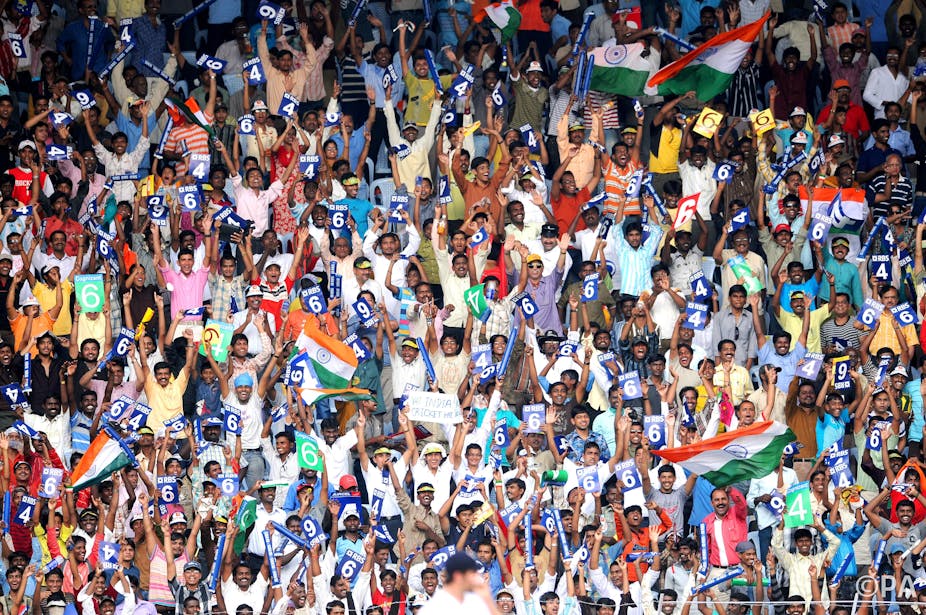The end of the Cold War and the era of “unipolar” US dominance that followed has led many to wonder about the future of international power. Who will rival, or perhaps even replace, the US?
At least one obvious candidate has emerged. Although it would be premature to categorise China as a global superpower, it is quickly developing into the US’s most plausible challenger. But in discussions of globally important matters - Syria, financial crisis, the NSA fallout and so on - one name is curiously absent: India.
When the dust settles on a rearranged global system, might India also become a global superpower? My answer is no.
To understand why, we need to look at what it means for a state to have “power”. Some international relations scholars, known as neorealists, suggest that nations are able to enhance their power by building up a range of demographic, economic, and military capabilities. John Mearsheimer, a leading theorist in this school, has identified two types of power: military and latent.
If we borrow Mearsheimer’s framework, military power can therefore be measured using existing armed forces and supporting naval and air forces. In his view, dominance over land is essential because success is defined by the ability to conquer and control territory.
Over the past two decades, India has demonstrated its ability to carry out underground nuclear tests and its capability to deliver nuclear warheads using intermediate ballistic missiles. However, it has not yet utilised these newly acquired capabilities to project power effectively. Regionally, a large percentage of India’s armed forces are stationed along the country’s extensive border areas with Pakistan and China. This inefficient allocation of military resources has limited India’s power projection beyond its borders.
Domestic poverty
In addition, the focus on India’s modest nuclear capabilities has detracted attention from weaknesses in India’s conventional forces. For instance, India does not have a strong weapons manufacturing industry, so it imports an overwhelming amount of its sophisticated military hardware from abroad, mostly from Russia. Moreover, India’s existing conventional military equipment is in severe need of modernisation.
Given the massive challenge of domestic poverty and underdevelopment, India simply has not had the resources to enable the development of a modern military arsenal. As such, it has been unable to assert itself on the international stage. In international conflicts, India’s military has only been active in humanitarian assistance and ancillary non-combat roles.
Although other countries, notably Russia and China, have been able to act as veto players on the international stage, India’s presence is of little consequence. For instance, few people would know or care to know what India’s position is on, say, the conflict in Syria.
Clearly India is not at present a global power. The question that remains to be answered is whether India has the potential to become a one in the future. Once again, academic theory guides us to think about a country’s latent power, which is the state’s ability to translate assets of population and wealth into mobilisable power.
Viewed in this way, India is also unlikely to gain a foothold as a major global player. To be sure, it has demonstrated an impressive ability to galvanise the information technology and business process outsourcing industries. However, these growth sectors are the exception, rather than the norm. In a largely agricultural country, there are huge internal wealth and income disparities across India.
Given that India is a democratic state, the government has to be responsive to the demands of its citizens. As such, the existing pressure for the redistribution of wealth limits growth in military expenditure and consequently inhibits the ability of the state to turn India into a global power. It is not surprising to note that India’s military spending as a proportion of GDP has declined since the late 1990s.
Signs of stagnation
At the core of the argument that India will not become a global power is the fact that it faces an insurmountable demographic challenge. From my point of view, as a result of this, there is little expectation that India will grow exponentially wealthier over time.
What is this demographic challenge? Well, an analysis of global population trends shows that over time, most likely by 2025, India will become the world’s most populous nation. But much of this growth is taking place in two states: Uttar Pradesh and Bihar. These two states are India’s largest and third largest states (with a combined population of 302m), but also India’s two poorest states (with a per capita income ranging from US$347 to US$450 a year). In this light, vibrant economic growth is unlikely to be sustainable in India. We are already witnessing the first signs of stagnation in the Indian economy.
In order for India to be a global power in the 21st century, it would need to develop its military capabilities and diminish its dependence on natural resources. The country would also have to devote substantial fiscal resources towards military expenditure.
Given the burden of a rapidly growing poor and unskilled population, it is hard to fathom how the Indian state will be able to allocate scarce resources into making it a militarily and economically powerful nation.

